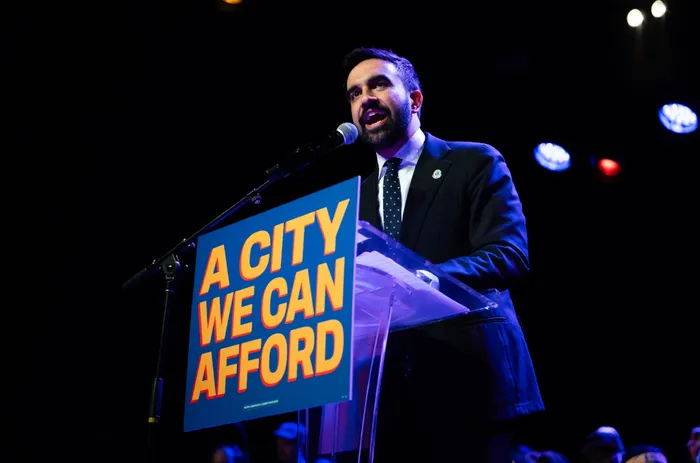
Zara Rahim.
Image: Instagram
When Zohran Mamdani clinched a shocking and historic win in New York’s 2025 mayoral race, much of the spotlight focused rightly on his youth, progressive vision, and bold policy platform. But behind that victory was a quieter force, a strategist whose experience spans the White House, fashion, corporate storytelling, and movement-building: Zara Rahim.
Born to Bangladeshi immigrant parents and raised in South Florida, Rahim’s early life laid the foundation for a deeply rooted belief in representation.
A University of Central Florida alumna, she studied communications and was fascinated by “how stories move people, shape opinions, and build community," according to The Times of India.
According to Fortune, her first major break came in 2012 when she joined Barack Obama’s re-election campaign as an intern, rising to the role of Florida Digital Content Director.
In that capacity, she honed her ability to connect with young, first-time, and minority voters via digital platforms, a theme that would travel through her career. After the campaign, she transitioned to the White House Office of Digital Strategy
Rahim’s career is notable for how deftly she moves between political spaces and cultural institutions.
After her time in the White House, she joined Uber, working on public policy and communications as the company navigated its heady rise and regulatory challenges.
In 2016, she returned to electoral politics for Hillary Clinton’s campaign before making a surprising transition into fashion.
As Communications Director at Vogue (2017–2018), she helped the magazine refine its political and cultural storytelling, a role that broadened her understanding of how narrative, identity, and power intersect.
Later, as an independent consultant, Rahim’s clients included A24, Netflix, Mariah Carey, and more, proof that her brand of communications strategy resonates far beyond electoral politics.
Rahim’s return to politics in 2025 as Senior Adviser to Zohran Mamdani proved pivotal.

.
Image: Madison Stewart/Zohran Mamdani Website
According to multiple sources, she urged the campaign to “forget the New York conjured by political strategists” and instead build a narrative grounded in the lived experiences of real New Yorkers.
That vision shaped a grassroots juggernaut: more than 90,000 volunteers, door-knocking in working-class neighbourhoods, and videos of Mamdani speaking in Spanish, Hindi, and Bengali, not just for virality, but for genuine connection.
When former governor Andrew Cuomo made remarks perceived by many as Islamophobic, Rahim was front and centre. She publicly challenged his narrative, framing it as a “desperate tactic … from a man who has nothing to say to Muslim people.”
Following the victory, Mamdani named Rahim to his all-female transition team, alongside heavyweights like Lina Khan and Maria Torres-Springer.
Her inclusion is more than symbolic: it signals that she’ll continue shaping the tone, policy, and communications of the incoming administration. The transition team reflects Mamdani’s commitment to inclusive governance.
In terms of intersectional leadership, Rahim represents a new generation of political operatives, women of colour, children of immigrants, fluent in both high-stakes politics and cultural discourse.
She also prioritises authenticity over optics: Her philosophy isn’t about polished messaging so much as rooted, community-based narrative. That has become a playbook for modern political movements.
With Mamdani set to take office on January 1, 2026, Rahim is poised to make the shift from campaign strategist to institutional leader. Here are a few arenas where she could leave a lasting imprint:
In terms of governance communications, she may help architect how the new administration talks to its base, blending grassroots authenticity with bureaucratic clarity.
In terms of policy advocacy, given her background, Rahim could influence key policy areas, especially on digital infrastructure, immigrant communities, and civic engagement.
In terms of strategic vision, even as she helps run government, she is likely to remain a sought-after consultant for brands and public figures who value her cross-sector expertise.
Rahim’s role in Mamdani’s campaign was not just tactical; it was transformational.
She redefined what “political communications” means in a city as complex as New York, blending authenticity, culture, and strategy in a way that resonated deeply with voters. As she transitions to a role in governance, her influence may only grow, shaping not just how policies are communicated but how they are lived, felt, and understood by the people they serve.
